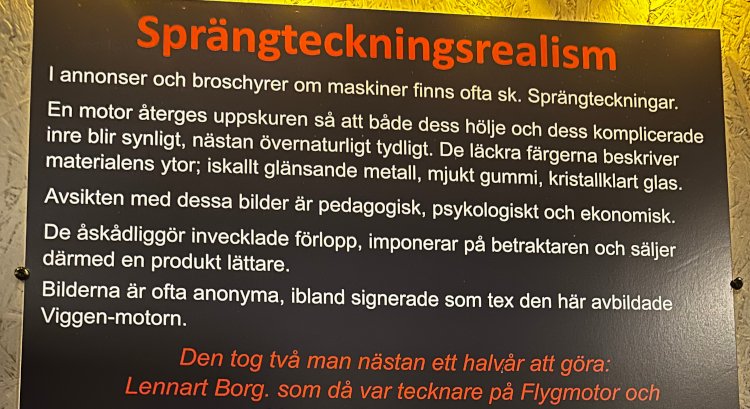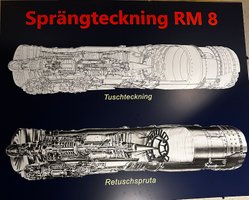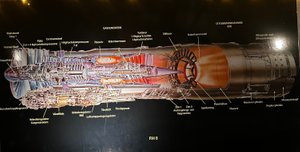Exploded view realism
Exploded view realism
In advertisements and brochures about machines there are often so-called Exploded view drawings.
An engine is rendered cut open so that both its casing and its complicated interior become visible, almost supernaturally clear. The delicious colors describe the surfaces of the materials, icy shiny metal, soft rubber, crystal clear glass.
The intention of these images is educational, psychological and economic.
They illustrate complex processes, impress the viewer and thus sell a product more easily.
The images are often anonymous, sometimes signed, such as the Viggen engine pictured here.
It took two men almost six months to make: Lennart Borg. who was then a draftsman at Aircraft engine and Magnus Romell, retouch.
As a basis, they used drawings, photographs, material samples and of course the engine in its entirety, assembled and disassembled. They spoke with designers and also got to see it in action behind dark glass in a test drive chamber.
After Lennart Borg made a 2 m long ink drawing with a drawing pen and a regular pen, in a sort of parallel perspective that he had worked out, Magnus Romell took over with the color retouching on a metre-long photocopy.
Most of the work is done with a retouch syringe (a "pen" with an opening into which you drop a special water solution in retouch paint, which in transparency lies between watercolor and gouache) which is connected with a hose to a compressor. Through a control on the sprayer, the amount of air and paint can be varied. If you want to reproduce, for example, rough, castings are given a little air and more color. The distance of the sprayer from the paper also gives different color structures. Almost always, unless you want large color displacements - you must use a template that is cut out of transparent briophane according to the shape to be painted.
Otherwise, the retoucher uses a ruler - as a hand support for lines - and a pointed brush for the smallest surfaces and contours.
Håkan Wettre/excerpt from the artists' magazine Paletten (nr 2 1975)


